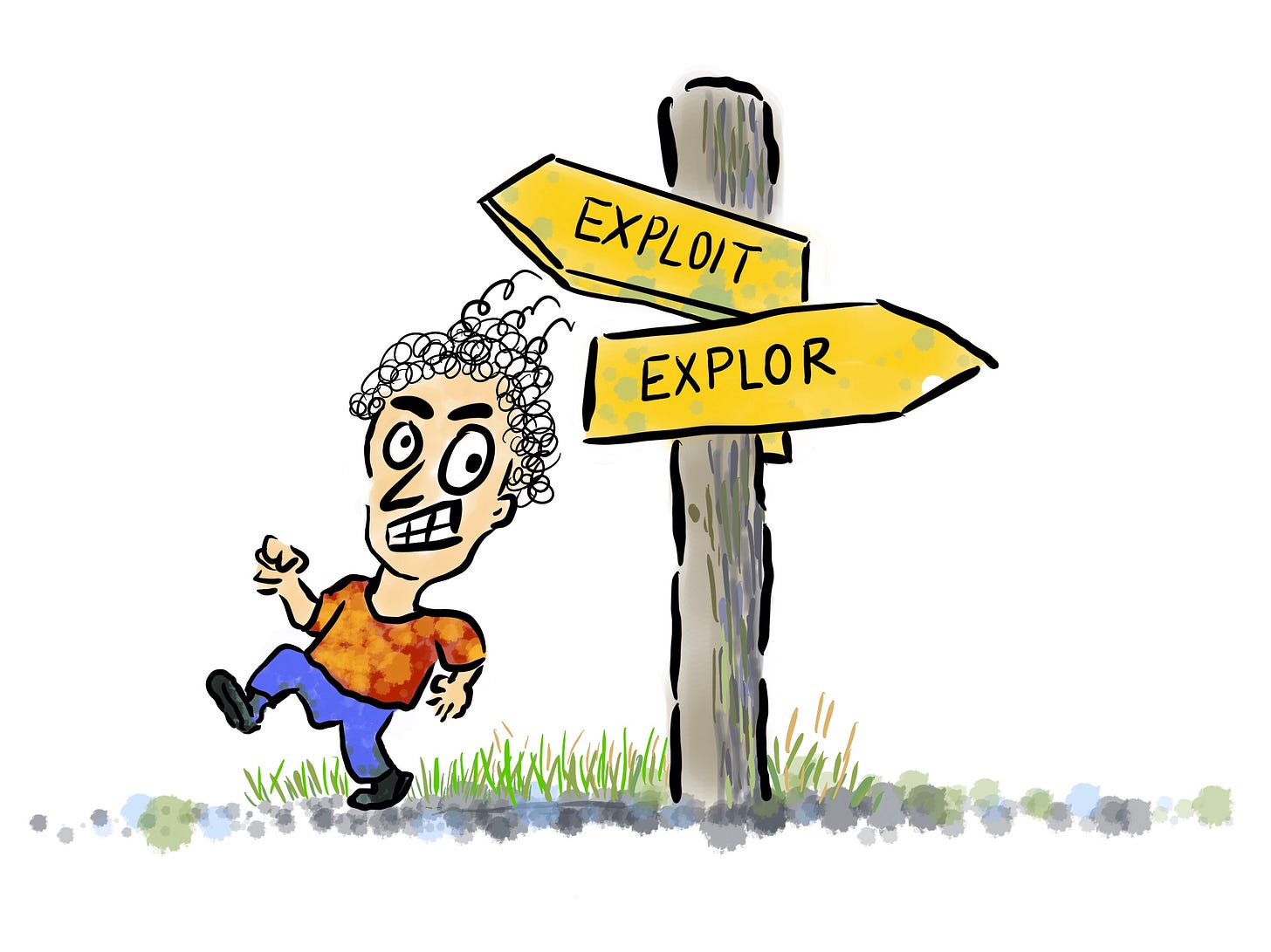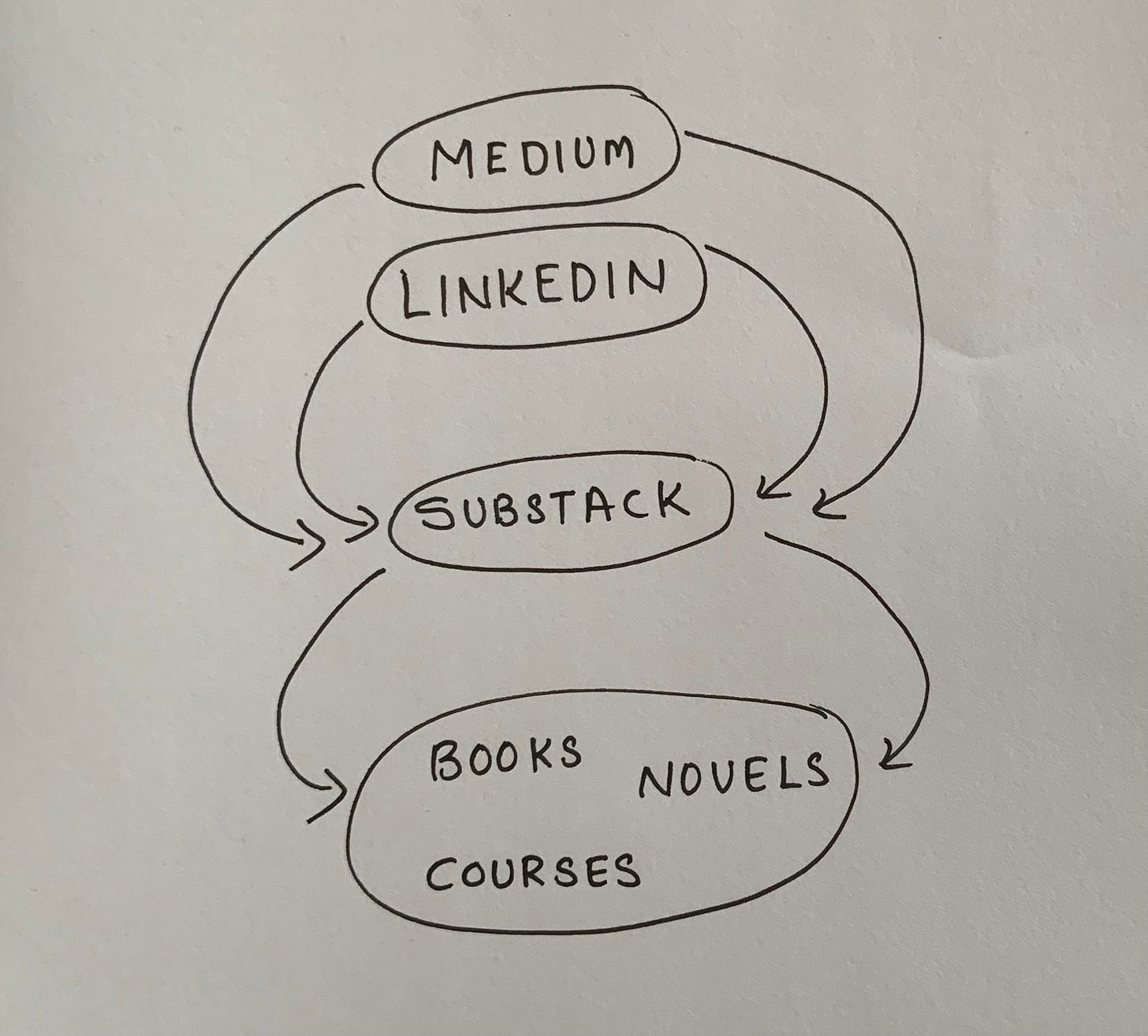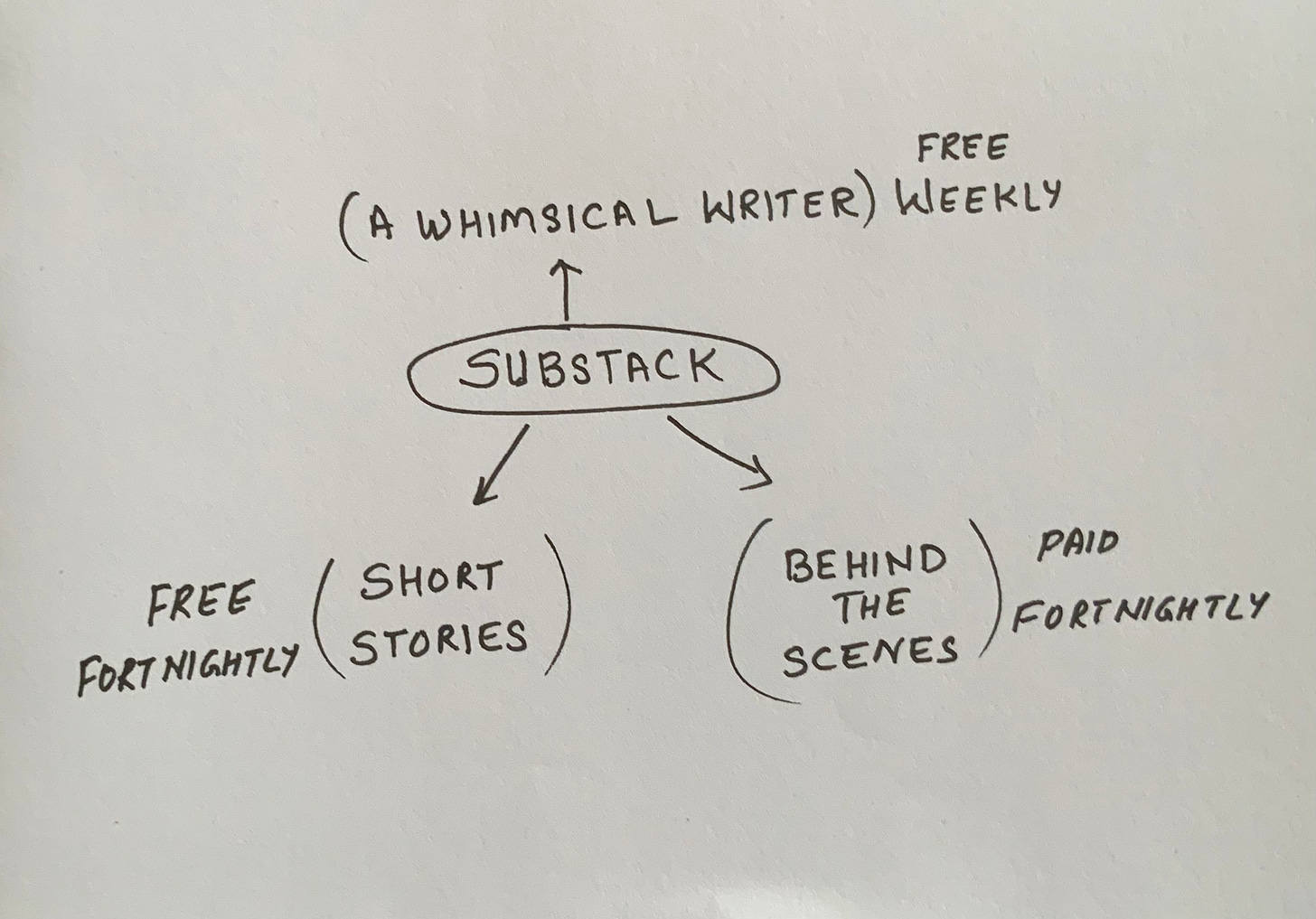A few months ago, I came across the “Explore, then Exploit” concept through one of Austin Kelon’s posts. He was referring to Derek Thompson’s research into what causes “hot streaks” in careers in The Atlantic.
The concept is simple - there’s a never-ending tension in creative work between “exploring new ideas and exploiting old certainties.”
Thompson explains it with an example from the car industry.
“Say you’re a car manufacturer. Every year, you must decide between investing in future innovations, such as self-driving software, and finding ways to squeeze new revenue out of existing technologies and materials. Too much fanciful R&D spending, and this year’s profit plummets. Too much emphasis on tweaking existing product lines, and you get squashed by some fresh upstart in a decade.”
Thompson notes that the same tension exists on the individual level: Do you spend your time exploring new possibilities or exploiting existing ones.
I looked at it from writers perspective.
Traditionally, writers have written for media (newspapers, magazines, films, and TV) and publishing (books) industries.
In the last decade or so, a plethora of new possibilities have arisen - such as blogs online magazines, social media, Medium, Vocal, Substack, NFTs, to name a few.
As a writer, would you explore new possibilities or would you stay with the existing ones?
Last month, Elle Griffin wrote an article ‘Do I even want to write another book, or should I write something that will get read instead’ which went viral. In the article, she pondered whether she should write another novel or continue to build her newsletter that people are paying to read.
“I have limited time,” she said in a podcast interview with Joanna Penn, “I have a day job in journalism. I’ve been writing my book on the side for three years, and I published it this year. It what was so crazy to me, when I realised that, maybe 46 people actually read through to the current chapter. And I have 4,200 newsletter subscribers.”
This is the question almost every new writer is pondering at the moment, including myself. I have a half-written first draft of a novel sitting on the shelf, which I want to finish this year. Then I have this growing reader base on Medium, LinkedIn, and Substack that I feel obliged to write for.
This tension between exploring (new platforms) and exploiting (the novel and books) has been tearing me apart. Should I choose one over the other?
Austin Kleon doesn’t see this tension between exploring and exploiting as something to get over or beat but as a kind of field from which our work emerges.
His thought is if an artist is to keep working, they will never resolve this tension, nor would they want to.
His view is that “In order for artistic or creative work to be “impactful,” the conditions must be right. There must be an audience ready to receive the work. The creative person has very little to do with that.”
I read it as a writer needs to go where the audience is.
Another point Austin Kleon makes is, “Your ‘impactful work’ may not be your best work. It is the work that connects with most of the readers.”
Elli Griffin doesn’t think her newsletter is her best work. But it is most impactful. Besides artists/ writers are often the worst judges of the value of their own work.
The question I was facing was whether I should I finish my novel which I would like to (and risk having no readers for my work), or keep exploring the new possibilities at the new platforms.
So confused was I that I set up a Zoom call with another Substack writer Melanie Newfield of The Turnstone. She, too, is between the exploring and exploiting phase. Over the forty-minute chat, we discussed our options.
But it was not until two days later that it occurred to me that everything I am doing is, in fact, connected. I have this cycle of creation going on where every activity feeds on the other.
I write for Medium and LinkedIn. My readers from both platforms subscribe to my Substack newsletter, from where they are introduced to my books, fiction, and courses. So Substack is at the center of all I do. Without it, I have no way to build my readership.
And without Medium and LinkedIn there is no way to introduce Substack newsletter to new readers.
I have decided to concentrate on Substack and make it my base. It will be the hub where I would share my fiction, non-fiction, books, and courses.
It will have three streams - Friday letters, short stories, and the Behind the Scenes newsletter.
Last Wednesday, I published a short story there. There are more on the way.
I have added two more components to my Friday letters, short stories and a ‘Behind the Scenes’ newsletter where I will share my insights, experiences, and learnings with writers wanting to establish their online careers.
So as not to bombard you with too many emails, the short stories and ‘Behind the Scenes’ will be fortnightly and will alternate with each other.
Since not all of my readers will be interested in ‘Behind the Scenes,’ it will only go to the paid subscribers.
I want to leave you with this image which describes the conundrum I discussed today.
That’s all from me this week.
Neera Mahajan
If you liked this newsletter, please subscribe to it.







Everything is, indeed, connected in our writing lives.